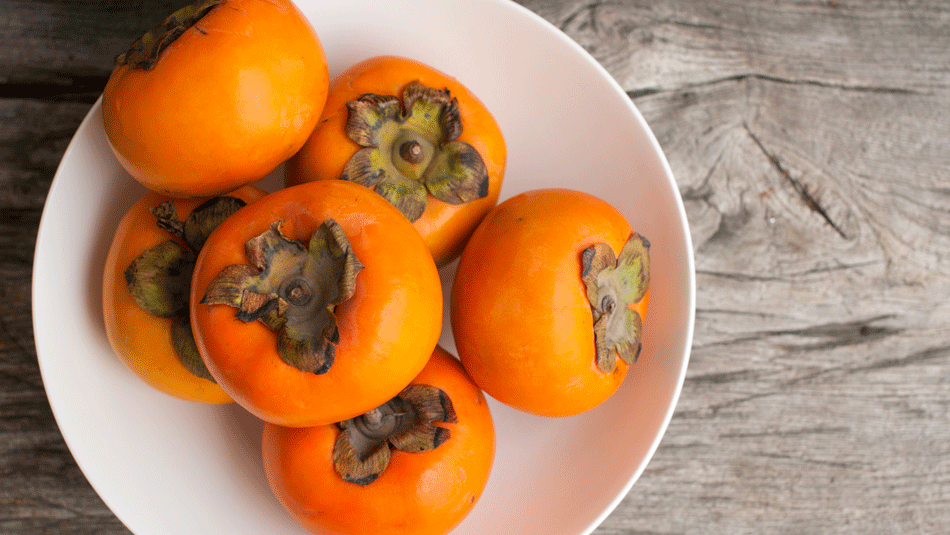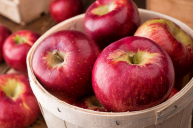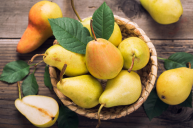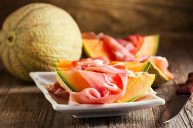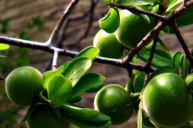If you look closely, nestled alongside the pumpkins at the farmer's market is another bright-orange, round beauty. It's petite, glowing, and full of quintessential autumnal charm: the persimmon. But do you know how to prepare and eat the two types most common in the United States- the Fuyu and the Hachiya?
If not, caveat eater! Though persimmons are a delightful fruit that should be employed beyond the display basket on the fall table, the Hachiya varietal can pack a mouth-walloping pucker.
Here's all the info you need to enjoy these golden beauties.
What Are Persimmons?
Persimmons come in many varietals around the world, but you'll generally spy them stateside between October and February- a short season. Boasting decent amounts of vitamins A and C, they're worth incorporating into your farmer's market haul.
Hachiya is the most widely available persimmon in the United States. It's relatively large-up to three inches in diameter-and round, with a slightly pointed, elongated base. You must wait until it is completely ripe before eating it. Unlike almost any other fruit, it has an unbelievable astringency when underripe. The Hachiya, in fact, is part of the "astringent" category of the persimmon. These varieties contain soluble tannins, also found in red wine, and are unpalatable when eaten unripe.
When they do ripen, however, Hachiya persimmons are divine-plush and tart-sweet. You can ripen astringent varieties in your own kitchen with bananas or another fruit, like pears, that give off high levels of ethylene at room temperature. Many swear by clear plastic containers, while the paper bag method also works well. Hachiya persimmons should only be eaten when they are so ripe that you can remove their flesh with a spoon.
The Fuyu-beloved by many chefs-is a non-astringent varietal. It looks quite like a tomato and is more squat than the Hachiya. Fuyu persimmons are the most common non-astringent varieties stateside and can be enjoyed prior to full ripeness. Naturally sweeter and firmer, this variety is often used for baking. When firm, they taste like a crisp mango-fig flavored apple.
Tenderly sweet with floral notes and spicy undertones, these little orange packages are unlike anything you've ever tasted. Their flesh can range from crisp to custard-like, and their flavors are a kaleidoscope of honey, pear, apple, vanilla, and cinnamon.
Where Are They Grown?
Persimmons are native to Japan, China, India, Burma, and Australia. In 1856, Commodore Matthew Perry sent their seeds from Japan to Europe and the United States. There are eight types of persimmon trees: Asian, Japanese, date-plum, American, black, Mabolo, Indian, and Texas.
In Texas, persimmons grow wild in the central and western parts-along with southwest Oklahoma. Texas persimmons also grow wild in Mexico in places like eastern Chihuahua, Coahuila, Tamaulpas, and Nuevo León. They also grow in California, which is the largest supplier in America. Even if you live in these regions, however, fresh persimmons are still a coveted farmer's market find.
How Do You Eat Them?
When picking persimmons, it's best to look for the non-astringent Fuyu varietal. They taste best when eaten while bright-orange, firm and crisp. (If you have a variety with seeds, they are indeed safe to eat, so no need to pick them out.) To enjoy, simply peel and slice like you would an apple. The most edible fruit is a ripe one, so let the Fuyu ripen from green-gold to orange before eating it.
Due to their short growing season, persimmons can flummox home cooks who aren't sure how to incorporate them into recipes, or consider them too precious to do anything but eat raw. But now that you know how to find them, here's how to cook them-a delightful use of a culinary treasure.
1. Honeyed Persimmon and Brie
Persimmons and brie go together like peanut butter and jelly. This recipe employs honey, walnuts and gooey Brie to fantastic effect. Sliced persimmons go into the oven mingling with those wonderful ingredients, and emerge as an appetizer guests can spoon onto baguettes. Yum.
Get the recipe here.
2. Persimmon Cookies
This brave baker tried Hachiya persimmons out in her rendition of the recipe-and it worked! (She must have been patient as they ripened.) We think these look divine: spiced to perfection, soft and chewy, brimming with raisins and walnuts, and shellacked in a light orange glaze. They may become your new holiday cookie of choice.
Get the recipe here.
3. Charred Cauliflower Tacos with Persimmon Salsa & Beet Slaw
You put mangos in salsa for your tacos. Why not persimmons? We love this recipe, in which equally seasonal pomegranate seeds make a cameo along with minced red onion, cilantro, lime juice and jalapeños. Get the recipe here.
4. Persimmon Cake
Uh, we're not sure we've ever seen a cake more beautiful than this one?! And it sounds even better than it looks: cinnamon; brown sugar; brown butter icing; salted crème fraîche caramel. This cake sings of autumn. Get the recipe here.
Charred Cauliflower Tacos with Persimmon Salsa & Beet Slaw
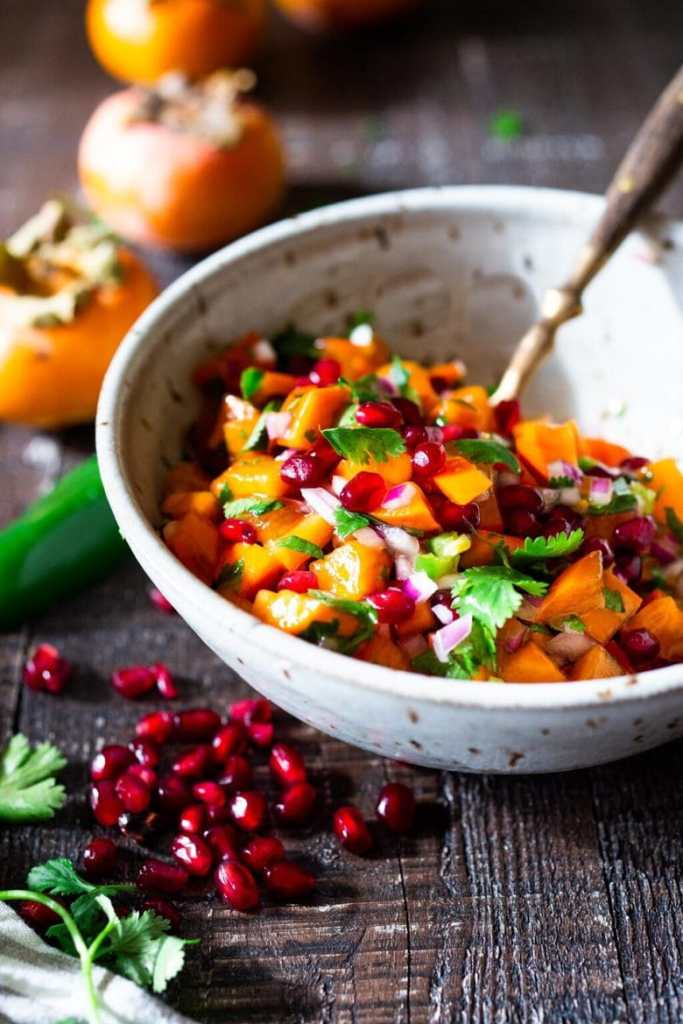
Feasting at Home
Do not pass up the opportunity to try persimmons in a savory preparation! Don't do it! Wrapped in bacon with a rosemary-spiced goat cheese, they make a crave-worthy appetizer you are going to want in your back pocket for holiday parties. Get the recipe here.
